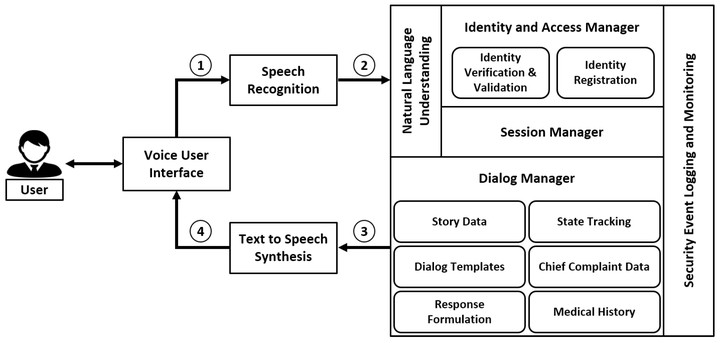
Abstract
Virtual assistants are involved in the daily activities of humans such as managing calendars, making appointments, and providing wake-up calls. They provide a conversational service to customers around-the-clock and make their daily life manageable. With this emerging trend, many well-known companies launched their own virtual assistants that manage the daily routine activities of customers. In the healthcare sector, virtual medical assistants also provide a list of relevant diseases linked to a specific symptom. Due to low accuracy and uncertainty, these generated recommendations are untrusted and may lead to hypochondriasis. In this study, we proposed a Medical Instructed Real-time Assistant (MIRA) that listens to the user’s chief complaint and predicts a specific disease. Instead of informing about the medical condition, the user is referred to a nearby appropriate medical specialist. We designed an architecture for MIRA that considers the limitations of existing virtual medical assistants such as weak authentication, lack of understanding multiple intent statements about a specific medical condition, and uncertain diagnosis recommendations. To implement the designed architecture, we collected the chief complaints along with the dialogue corpora of real patients. Then, we manually validated these data under the supervision of medical specialists. We then used these data for natural language understanding, disease identification, and appropriate response generation. For the prototype version of MIRA, we considered the cases of glaucoma (eye disease) and diabetes (an autoimmune disease) only. The performance measure of MIRA was evaluated in terms of accuracy (89%), precision (90%), sensitivity (89.8%), specificity (94.9%), and F-measure (89.8%). The task completion was calculated using Cohen’s Kappa ( k = 0 . 848 ) that categorizes MIRA as ‘Almost Perfect’. Furthermore, the voice-based authentication identifies the user effectively and prevent against masquerading attack. Simultaneously, the user experience shows relatively good results in all aspects based on the User Experience Questionnaire (UEQ) benchmark data. The experimental results show that MIRA efficiently predicts a disease based on chief complaints and supports the user in decision making.